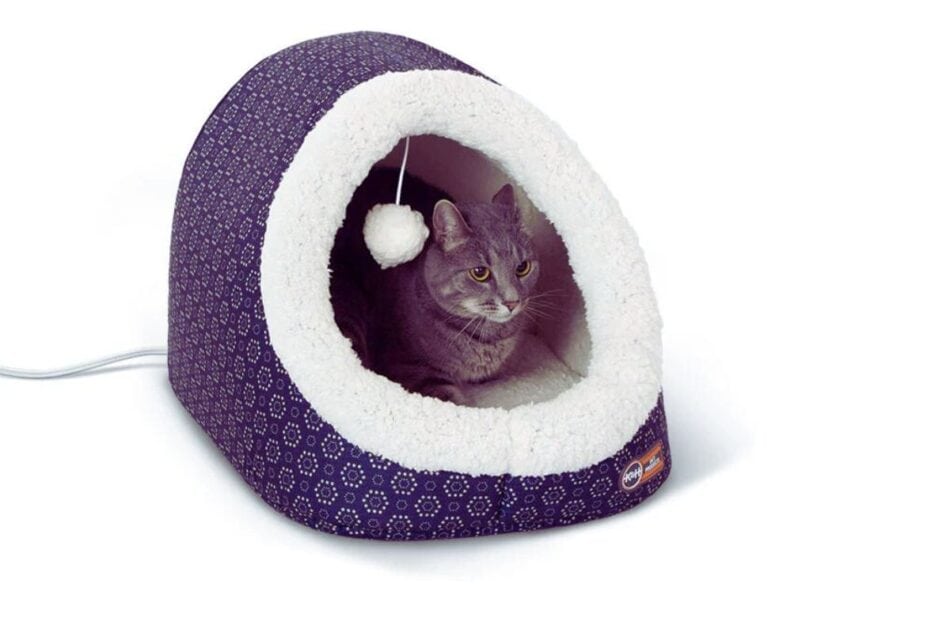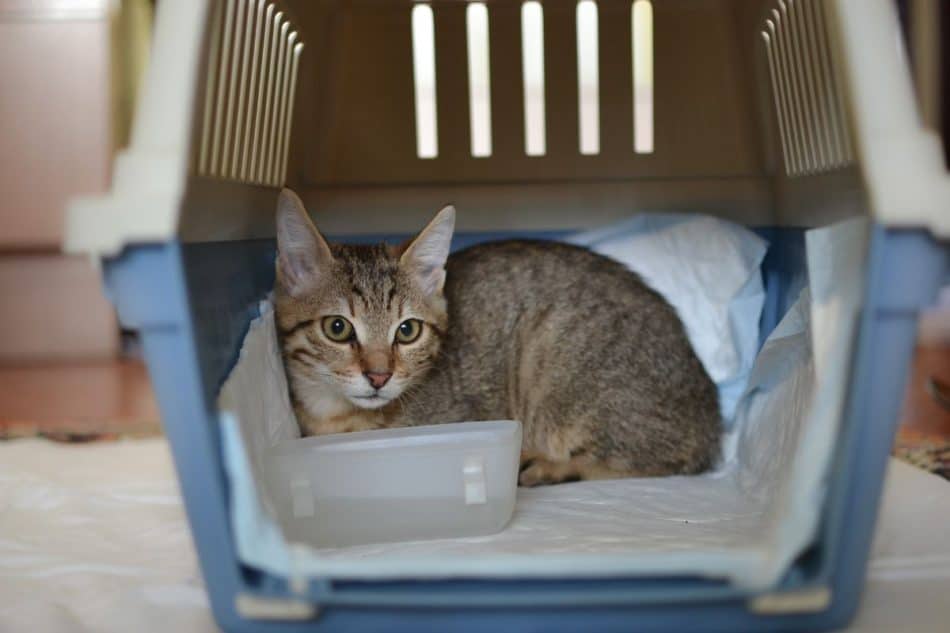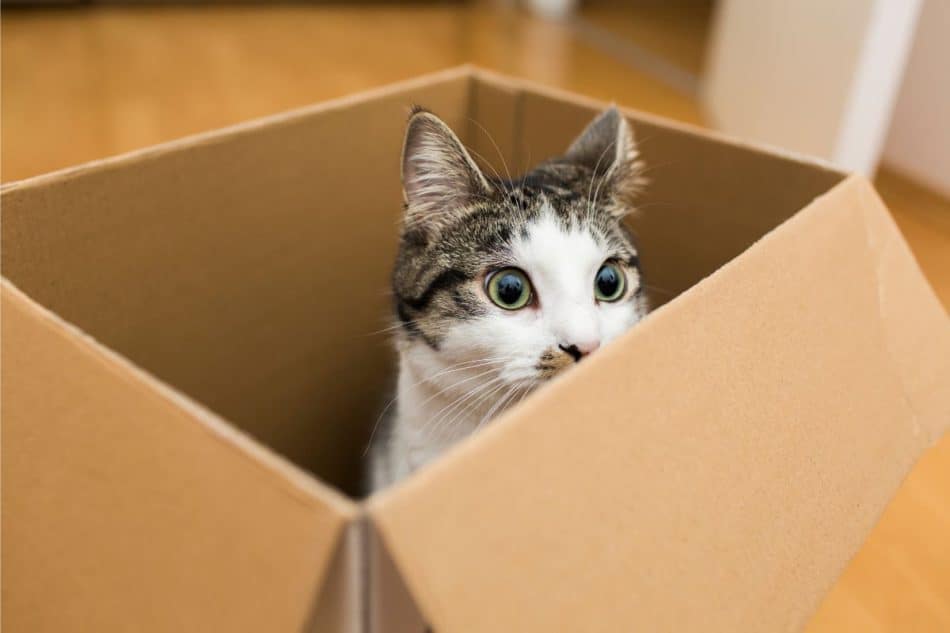Table of Contents
Introduction
Having been a co-caretaker in a household of multiple rescue cats, I know the feeling a cat parent can get when one of the kitties just disappears. The hope always is that they are just hiding.
There are several activities that cats do simply because they are cats. Hiding is one of those activities they will do on occasion. It is instinctive behavior.
One of the best things we can do for our kitties is to provide them with ways to act out their various instinctive behaviors in a safe manner. What Are Cat Natural Instincts? is my blog post that will give you more insights as to why cats do what they do.
3 Reasons to Give Your Cat Hiding Places
1. So you can find them when they hide
Anyone who has lived with a cat for any length of time knows they sometimes just seem to disappear.
I have on occasion spent a significant amount of time looking all over the house for a cat that has seemed to have vanished into thin air. All the while, I would be worrying about whether or not they were sick, injured, or somehow got out of the house and run off.
Then suddenly they would show up and look at me as if to say “were you looking for me?”
If you provide them a few hiding places, perhaps they will hide in those places instead of in the mystery places. Then you will at least know where to find them when they decide to drop out of sight.
There is no guarantee this will work every time, but it might be worth trying.
2. To give them an alternative to unsafe hiding places
Cats can be very cautious, but not always. Sometimes they act without thinking about negative consequences. Cat parents can find this to be emotionally draining and fraught with worry.
Giving them a safe place to hide may divert their attention from places where they might not be able to remove themselves, or could in some other way have put their well-being at risk.
A nice place to hide that you have chosen for them is certainly going to be better than behind the refrigerator or underneath a sofa cushion.
3. It may help them to relieve stress
A study published by Applied Animal Behaviour Science found that providing hiding boxes reduced stress in cats who were new arrivals to an animal shelter.
So a cat who is exposed to a stressful situation will want to go hide. I have seen this when strangers came to visit or fireworks were going off or thunder was in the area.
I have also witnessed cats deciding to hide when there was nothing out of the ordinary going on.
Your cat not being able to find a safe hiding place when they are stressed is not good, and I would also say that not being able to find a safe hiding place when they just want to hide is not good either.
In the first instance they need to react to perceived threats that scares them. In the second instance they are liable to get stressed if they can’t do cat their behavior.
How to Give Your Cat a Safe Hiding Place
1. Buy your kitty a cat house
A cat house with a soft pillow inside would be nice for the sake of comfort.
Anywhere a cat lies down there will be an accumulation of hair, so the cat house should be easy to clean.
Here is a cat house with a pillow inside that can be cold water washed on the gentle cycle, and dried on your machine’s no-heat cycle:

- K & H Indoor Pet House – Unheated
- For more info visit the K & H company website
2. Consider a hooded cat bed
A comfortable cat bed with a little roof over it could be something your kitty would like to hide in.
Here is one that looks like a cozy hideout:

- K & H Thermo-Pet Cave – (Heated and Unheated)
- For more info visit the K & H company website
My blog post 5 Tips on How to Choose a Cat Bed will give you more on this subject.
3. Use a cat carrier as a hiding place
If you have a cat carrier, consider taking the door off and putting a soft blanket inside.

For some excellent information on cat carriers, look up my blog post How to Choose a Cat Carrier
4. A cardboard box can be a temporary novelty for hiding and for play

If you have received a delivery, your cat has probably already shown an interest in the box it came in.
Be sure to remove any staples or string from the box. If they start chewing on the cardboard, it may be time to store the box out of sight until you can recycle it or dispose of it.
Most cats find cardboard boxes hard to resist.
5. A cat tree can be a good place to hide
I have observed that one of the reasons that cats like to get up onto high places is in order to hide out.
In this regard, a nice tall cat tree could satisfy your kitty’s hiding instinct. I like cat trees with posts that are made of solid wood.
See my blog post How to Choose a Cat Tree for seven things to look for when you buy a cat tree.
How Can I Find My Cat When He or She is Hiding?
If you have provided your pet hiding places, check those first. Hopefully they are there. If not:
1. Walk around the house calling your kitty’s name. (This usually does not work, but worth a try.)
2. Get a bag of their treats and shake it vigorously. (This worked for me most of the time. Be sure to reward them with some of the treats when they show up)
3. If you don’t have treats, shake their bag of dry food or open a can of wet food.
4. Check the kitchen cabinets, the washer and dryer, the closets, under the beds…..
5. Wait for a little while, then try again.
Cats seem to like to do things on their own terms, so they will decide when to come out of their hiding place. My success with the treat bag rattling strategy convinced me they like treats more than hiding. However, who knows what mischief lurks in the hearts of cats…..only the kitty knows.
And One Last Word
Living With Your Cat is my blog post that has information that can make your life with your kitty the absolute best it has ever been.
